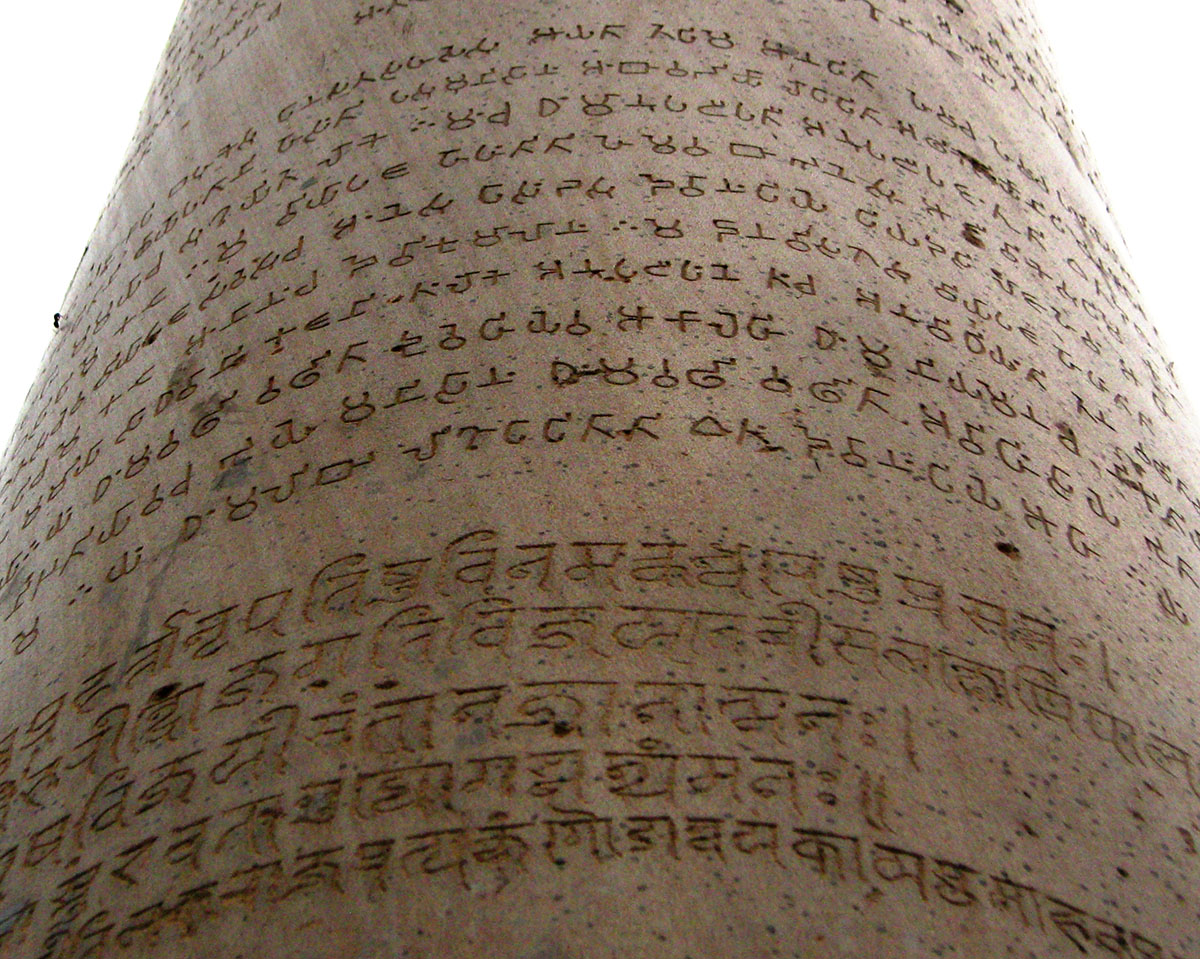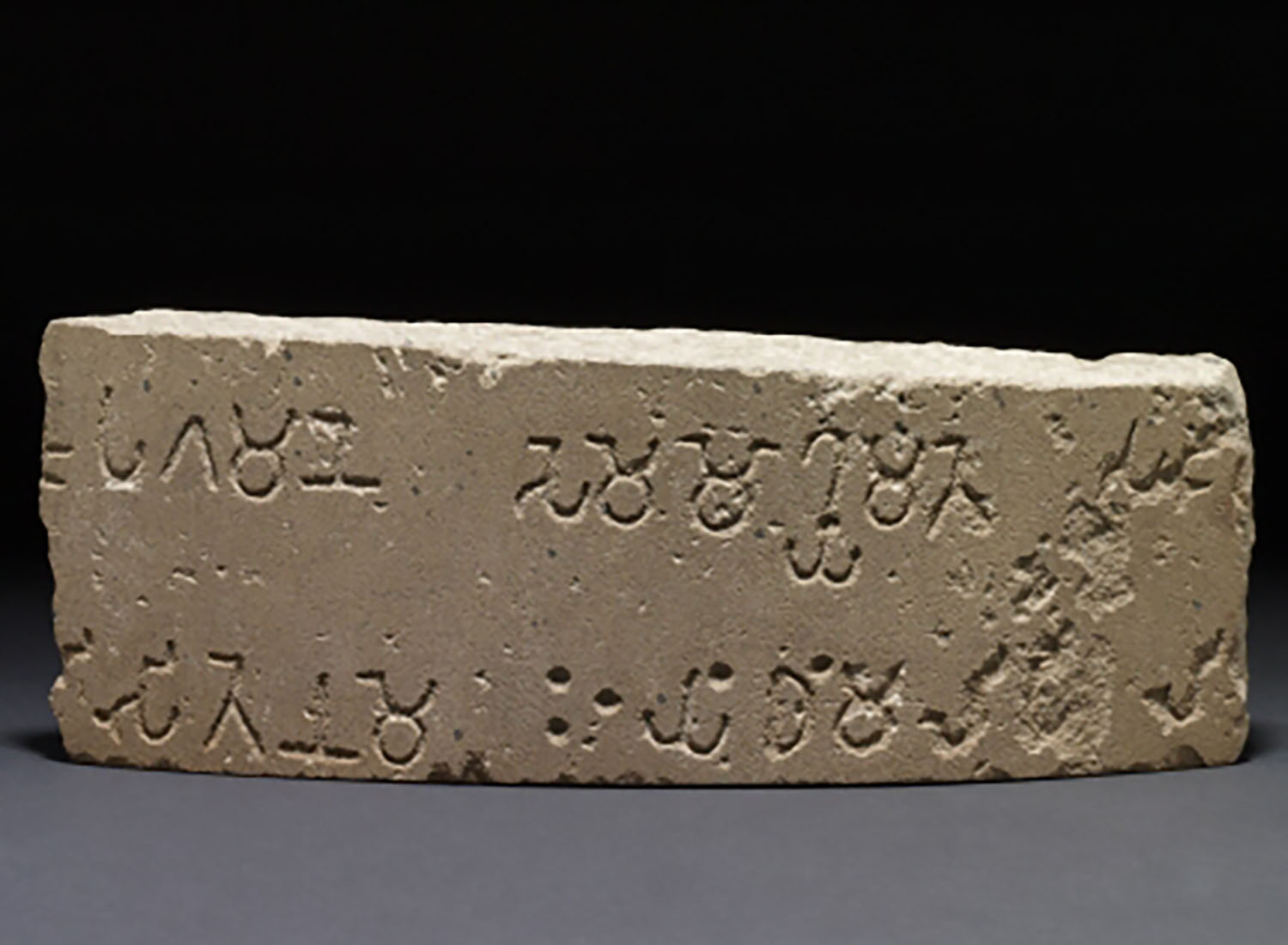ARTICLE
Ashoka Edicts
Carved in rock and stone pillars, the edicts of Mauryan emperor Ashoka (r. 268-232 BCE) are the earliest epigraphs from the Indian subcontinent. The edicts are a set of inscriptions on rocks and pillars written in Ashokan Prakrit (using the Brahmi and Kharosthi scripts), Aramaic and Greek. The edicts are concerned with the ideas of Dhamma (Prakrit, loosely meaning “to uphold” in a Buddhist context), moral conduct and righteousness. The inscriptions detail the reforms enacted by Ashoka in the name of Dhamma, which include a more fair sentencing of prisoners, measures for animal conservation, upholding Buddhist principles and traditions, endorsing religious tolerance and cultural exchange, access to healthcare for humans and animals, and the establishment of the Dhamma Mahamatra (officers of Dhamma). The edicts also act as evidence of regional lifestyles, linguistic diversity within the Mauryan Empire, widespread literacy, and the infrastructure of the empire which allowed for the movement of the pillars, artisans, materials and the propagation of Ashoka’s message. The edicts are spread across the subcontinent, namely present-day Afghanistan, Pakistan, Nepal, Bangladesh and India. Ashoka’s edicts have been classified into the Minor and Major Rock Edicts, and the Minor and Major Pillar Edicts. The edicts are numbered according to their content, and a single edict may therefore recur in different locations, often close to the empire’s borders.
The Minor Rock Edicts are the earliest, inscribed in the tenth year of his reign. Carved in rock and written in the Aramaic, Greek, Kharosthi and Brahmi scripts at different locations along the Mauryan borders across the Indian subcontinent, the Minor Rock Edicts express Ashoka’s dismay at the human cost of war, which is interpreted as his motivation for converting to Buddhism,[a][b] and his interest in the activities of the Buddhist sangha (Sanskrit: “association” or “assembly”). The Minor Rock Edicts are considered the most crudely inscribed, and are particularly concentrated in the southern Deccan, possibly because the region had been newly incorporated into the Mauryan Empire at the time. Minor Rock Edict No.2 from Maski, Karnataka established that the epithet Devanampriya (Pali, meaning “beloved of the gods”) was carried by Ashoka himself.
The fourteen Major Rock Edicts, created after the Minor Rock Edicts, introduce reforms in Mauryan law in accordance with Ashoka’s Dhamma — non-violence towards animals, medical provisions for all, freedom of religion, and so forth — as well as the different groups of officers charged with implementing the new laws. To underline the supposed benefits of these reforms, the edicts also contrasted the social and spiritual state of the land before and after Ashoka’s embrace of Dhamma. The epithet Devanampriya Piyadasi (Pali, literally meaning “one with a benevolent gaze”) is used instead of Ashoka, and there are no mentions of Buddhism or the Sangha in the Major Rock Edicts. Inscribed on large rocks, the edicts are located in Kandahar, Shahbazgarhi and Mansehra in Pakistan, Girnar in Gujarat, Soppara in Maharashtra, Sannati in Karnataka, Yerragudi in Andhra Pradesh, Jaugada and Dhauli in Odisha, and Khalsi in Uttarakhand.
The Minor Pillar Edicts are dated to the twelfth year of Ashoka’s reign and are contemporaneous with the Major Rock Edicts. These were erected at Sanchi, Sarnath and Prayagraj (previously known as Allahabad) in India, and Lumbini and Nagali Sagar in Nepal. Scholars are of the opinion that the Minor Pillar Edicts were inscribed by sculptors and engravers who had access to simple methods of handling the stone, in a time when stone engraving was relatively new in the Indian subcontinent. By contrast, the lion capitals from the Sanchi and Sarnath pillars are anatomically accurate and precisely carved, possibly made by Persian sculptors from the erstwhile Achaemenid Empire (dissolved in the fourth century BCE), who were trained in Hellenistic sculpture. The pillars at Lumbini and Nagali Sagar to commemorate Ashoka’s pilgrimage to the Buddha’s birthplace do not have capitals. The Prayagraj pillar was inscribed with the Schism edicts and the Queen’s edict, and later the first six Major Pillar Edicts as well.
The last of Ashoka’s edicts are the seven Major Pillar Edicts, all inscribed in Ashokan Prakrit in the Brahmi script. The six pillars bearing these inscriptions are at Lauriya-Nandangarh, Lauriya-Araraj, Rampurva, Prayagraj, and two at Delhi which were moved from Topra and Meerut in the fourteenth century by Feroz Shah Tughlaq. Of the two pillars at Rampurva, only the one topped with a lion capital is inscribed. The Major Pillar Edicts, like their predecessors, emphasise the importance of Dhamma in everyday life, and praise Ashoka’s commitment to it during his decades of rule. The Edicts also introduce laws against animal slaughter, grant legal rights and some pardons to prisoners sentenced to death. The seventh edict, which has been inscribed only on the Delhi-Topra pillar, summarises some of Ashoka’s key accomplishments, particularly those done in the name of Dhamma.
The practice of inscribing edicts does not appear to have been carried forward by later Mauryan rulers, but scholars continue to debate some aspects of the Edicts’ authorship and dates, particularly in the case of the epithets used for Ashoka and certain irregularities in the Delhi-Topra pillar inscription. The edicts are noted by many political historians as evidence of Ashoka’s progressive ideals and as a key factor in strengthening the presence of Buddhism in India.
Bibliography
Our website is currently undergoing maintenance and re-design, due to which we have had to take down some of our bibliographies. While these will be re-published shortly, you can request references for specific articles by writing to hellomapacademy@map-india.org.








